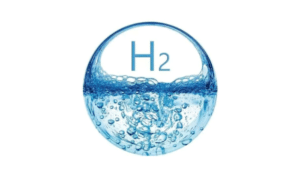Working with Hydrogen
Hazardous Areas
Lithium Oil and Gas have specialist hazardous area consultants that can help with the design and installation of your hazardous area hydrogen handling systems, contact us today to find out how we can help.
Hydrogen is a clean and promising energy source, the potential of which is still being discovered. The most promising aspects of its use is to lower our dependency on fossil fuels. However, there are some potential risks of which hazardous area workers must be aware.
When we chat to people about hydrogen and the perceived risks most people immediately grin and mention the Hindenburg disaster. This disaster occurred on May 6, 1937 when a German passenger airship caught fire and was destroyed during its attempt to dock with its mooring mast at the air station. A variety of hypotheses have been put forward for the cause of ignition for the ensuing fire most of which have some validity. Luckily times have changed and so has our understanding of safe hydrogen handling which means a repeat of a Hindenburg style disaster can be avoided if robust safety systems are implemented correctly.
Why use Hydrogen
There are many reasons why hydrogen is seen as the next great energy source and most people who have been following the evolution of hydrogen in industry don’t need to be told. But for those who don’t, here is a summary of some of the benefits.
1. Hydrogen is abundant and a great source of energy.
2. Hydrogen can be generated in many ways. Hydrogen gas can be produced from methane, gasoline, biomass, coal or water. Each of these processes requires different amounts of energy input and the various technologies still need refinement.
3. When hydrogen burns in oxygen the combustion product is water.
4. Hydrogen is an efficient energy source. It has a high energy content for every gram of fuel.
5. It is non-toxic. Leaks or spills do not contaminate the environment.
6. Hydrogen is lighter than air. If a leak occurs in an open air situation it will tend to rise up and disperse.
Hydrogen also has some draw backs many of which will be overcome with investment in new technologies:
1. It has a wide explosive range compared to other fuels (4.0% LEL – 77.0% UEL). If a hydrogen leak occurs there is a higher likelihood the gas will be at an explosive fuel air mixture increasing the risk of ignition
2. You cannot smell, see, or taste it which means the human sense may not detect a leak. However, the use of gas odorants has been around for a long time so this issue can easily be overcome.
3. It is exceedingly difficult for the naked eye to detect hydrogen burning, since it burns in the ultraviolet colour range.
4. Current methods of producing hydrogen are energy intensive and in many cases still rely on fossil fuels.
5. Storing and transporting hydrogen can be tricky. Hydrogen can be stored physically as either a gas or a liquid. Storage of hydrogen as a gas typically requires high-pressure tanks (35,000–70,000 kPa tank pressure). Storage of hydrogen as a liquid requires cryogenic temperatures because the boiling point of hydrogen at one atmosphere pressure is −253°C.
6. Hydrogen has a low minimum ignition energy. The minimum ignition energy (MIE) of a hydrogen–air mixture is only 0.019 mJ. The MIE is an important parameter in determining the risks associated with electrostatic discharge. Hydrogens low MIE places it in the high-risk category in relation to electrostatic discharge.
Common Hydrogen Data

CAS No: 1333-74-0
Relative Density to Air (air is 1): 0.07
Melting Point: -259°C
Boiling Point: -253°C
Flashpoint: N/A (Gas)
Lower Explosive Limit LEL: 4.0
Upper Explosive Limit UEL: 77
Autoignition Temperature: 560°C
Gas Group: IIC
Temperature Class: T1
(Source AS/NZS 60079.20.1:2012)
Common Sources of Hydrogen
Hydrogen from Electrolysis
Hydrogen gas is extracted from water by a technique known as electrolysis, which involves running a high electric current through water to separate hydrogen and oxygen atoms. The electrolysis process is pretty expensive since it involves high energy expenditure. Obtaining volumes of hydrogen by this method is still under research to establish a viable method of generating it domestically at a relatively low cost.
Hydrogen from Steam-Methane Reforming
Steam-methane reforming is a mature production process in which high-temperature steam (700°C–1,000°C) is used to produce hydrogen from a methane source, such as natural gas. In steam-methane reforming, methane reacts with steam under 300–2500 kPa pressure in the presence of a catalyst to produce hydrogen, carbon monoxide, and a relatively small amount of carbon dioxide.
Step 1: Steam-methane reforming reaction
CH4 + H2O (+ heat) → CO + 3H2
To improve the efficiency of the process a second step is used were the carbon monoxide and steam are reacted together in the presence of a catalyst to create carbon dioxide and more hydrogen
Step 2: Water-gas shift reaction
CO + H2O → CO2 + H2 (+ small amount of heat)
